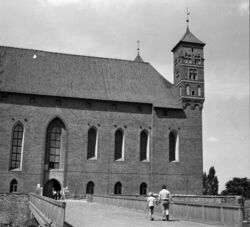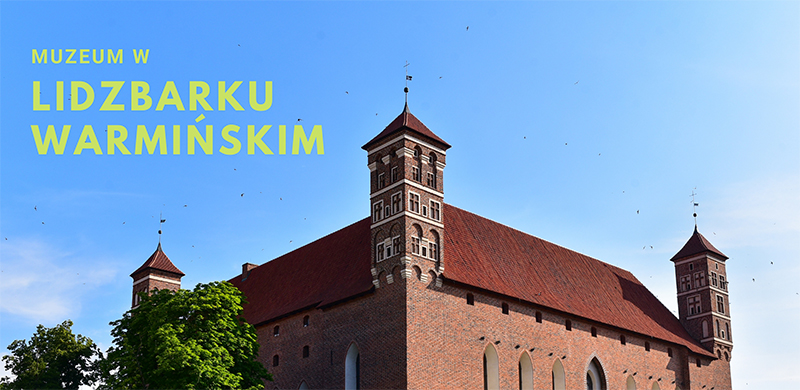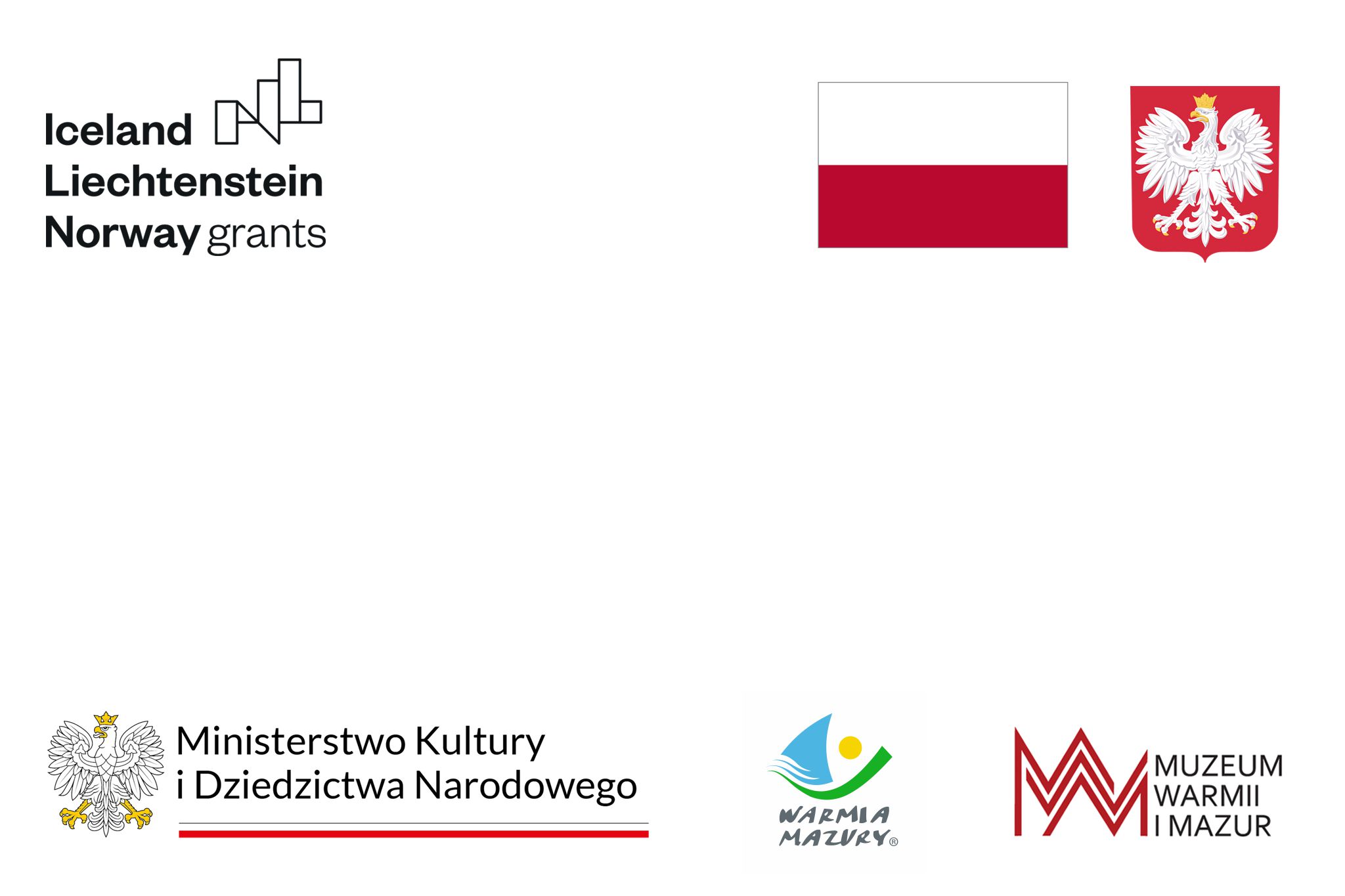Year 1230. The Prussians living around the Lecbarg stronghold did not realize that they had only a few years of relative peace left.
They cultivated the land, taking care of their barcias, raised animals, dryers, baths and warehouses, where they stored food in lumps of ice. They worshipped the forces of nature: the sun and moon still looking for each other in the sky, noisy thunders illuminating the nights, handsome oaks and vital lindens. They continued to burn their dead at the stake, along with the objects they used, and buried the remains in ashtrays, buried in burial pits. Before the deceased turned to ashes, they played and drank over his body for up to several weeks. They lived as they did generations before them.
Meanwhile, in a city on seven hills, famous for his approval of the Crusades and the fight against all heresies, Pope Gregory IX blessed the knights of the Order of the Hospital of the Blessed Virgin Mary of the German House in Jerusalem. It was prayed that the Teutonic Knights would deal with the Baltic pagans as soon as possible. In the same year, the knights led by Hermann Balk took over the Mała Nieszawka castle, opposite the later Toruń and began expeditions from there to the Chełmno land and into the Prussian territories. They received powerful support from Germany, Polish and other countries of Christian Europe. It was easier for those willing to take part in the crusade to fight on the Baltic Sea than in the hot, dry and, above all, distant Holy Land. The crusaders quickly occupied areas along the Vistula and the Vistula Lagoon to advance from there into the country. The iron hoop around the Prussian tribes tightened.
Until the year 1241 came, in which the fighting brothers captured the stronghold on Łyna and Symsarna, quickly adapting it to be a monastic watchtower. Lecbarg became Heilsberg, although the new name appeared in sources only in 1264. The Prusai did not give up so easily. A year later, they recaptured the former property, destroying it. They thus confirmed the words of Ibrahim ibn Jacob; "When they are invaded by any army, none of them is reluctant to join his associates, but he stands up without looking at anyone, and chops with his sword until he perishes." The success of the Prussian counterattack lasted for a very short time, the Teutonic Knights recaptured temporarily lost land, and the papal legate William of Modena, seeing the successes of the knights, initiated dividing the skin on the bear. Four dioceses were to be established for the intention of the Church; Chełmno, Warmian, Pomesanian and Sambian. The third part of each of them belonged to the bishop as a dominum, so in 1251 Heilsberg passed from the hands of the Teutonic Knights to the power of bishop Anselm, who a few years later ordered to rebuild the city experienced by bloody fights ...
In times closer to our contemporaries, Ryszard Czerniewski immortalized the Lidzbark castle, which is a symbol of episcopal power. Built later than the events described, it replaced its wooden predecessor.
Mw
Bibliography;
Herrmann Christofer, Castles in the Teutonic State in Prussia. Compendium of Teutonic and Episcopal Castles, Olsztyn 2015.
Jackiewicz-Garniec Małgorzata, Garniec Mirosław, Bishops' Castle in Lidzbark Warmiński. Guide, Olsztyn 2017.
Jackiewicz-Garniec Małgorzata, Garniec Mirosław, Castles of the Teutonic State in former Prussia, Olsztyn 2009.
Mierzyński Sebastian [in:] Warmia – kraina z historii, ed. Żuchowski Piotr, Olsztyn 2022.
Meanwhile, in a city on seven hills, famous for his approval of the Crusades and the fight against all heresies, Pope Gregory IX blessed the knights of the Order of the Hospital of the Blessed Virgin Mary of the German House in Jerusalem. It was prayed that the Teutonic Knights would deal with the Baltic pagans as soon as possible. In the same year, the knights led by Hermann Balk took over the Mała Nieszawka castle, opposite the later Toruń and began expeditions from there to the Chełmno land and into the Prussian territories. They received powerful support from Germany, Polish and other countries of Christian Europe. It was easier for those willing to take part in the crusade to fight on the Baltic Sea than in the hot, dry and, above all, distant Holy Land. The crusaders quickly occupied areas along the Vistula and the Vistula Lagoon to advance from there into the country. The iron hoop around the Prussian tribes tightened.
Until the year 1241 came, in which the fighting brothers captured the stronghold on Łyna and Symsarna, quickly adapting it to be a monastic watchtower. Lecbarg became Heilsberg, although the new name appeared in sources only in 1264. The Prusai did not give up so easily. A year later, they recaptured the former property, destroying it. They thus confirmed the words of Ibrahim ibn Jacob; "When they are invaded by any army, none of them is reluctant to join his associates, but he stands up without looking at anyone, and chops with his sword until he perishes." The success of the Prussian counterattack lasted for a very short time, the Teutonic Knights recaptured temporarily lost land, and the papal legate William of Modena, seeing the successes of the knights, initiated dividing the skin on the bear. Four dioceses were to be established for the intention of the Church; Chełmno, Warmian, Pomesanian and Sambian. The third part of each of them belonged to the bishop as a dominum, so in 1251 Heilsberg passed from the hands of the Teutonic Knights to the power of bishop Anselm, who a few years later ordered to rebuild the city experienced by bloody fights ...
In times closer to our contemporaries, Ryszard Czerniewski immortalized the Lidzbark castle, which is a symbol of episcopal power. Built later than the events described, it replaced its wooden predecessor.
Mw
Bibliography;
Herrmann Christofer, Castles in the Teutonic State in Prussia. Compendium of Teutonic and Episcopal Castles, Olsztyn 2015.
Jackiewicz-Garniec Małgorzata, Garniec Mirosław, Bishops' Castle in Lidzbark Warmiński. Guide, Olsztyn 2017.
Jackiewicz-Garniec Małgorzata, Garniec Mirosław, Castles of the Teutonic State in former Prussia, Olsztyn 2009.
Mierzyński Sebastian [in:] Warmia – kraina z historii, ed. Żuchowski Piotr, Olsztyn 2022.







